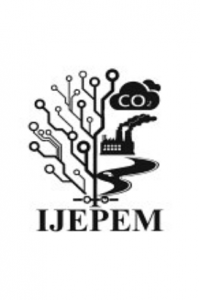Behavior of Inorganic Contaminants Associated with Agricultural Fertilizers and their Impact on Soil and Plant ecosystems
Behavior of Inorganic Contaminants Associated with Agricultural Fertilizers and their Impact on Soil and Plant ecosystems
Inorganic fertilizers are subjected to an easy breakdown in soil compared to organic manures and, therefore, easily contaminate soil, water, and air. The major source of contamination is from nitrogenous and phosphatic fertilizers, which affect soil properties, runoff cause water contamination, or sometimes escape to atmosphere affecting air quality thereby enhanced contribution to greenhouse gases contributing to climate change. The contaminants associated with various kinds of fertilizers became an important issue due to its hazardous effect on soils, plants and human health. Also the indiscriminate use of fertilizer and manures with improper handling and storage facilities, etc. often result in degradation of natural resources, releasing contaminants into soil, air, and water that directly impact human health. High buildups of Potential Toxic Elements (PTEs) like Cr, Cd, Pb, Ni, Hg and F in the soil are often associated with an excess application rate of manures and fertilizers in agriculture. Various contaminants have a direct effect on soil properties, such as a reduction in soil organic carbon, a high accumulation of salts, compaction, surface crusting, and an imbalance of essential nutrients. The most effective factors for contaminant solubility in soils are: the total and available form of the element, pH, organic matter, calcium carbonate, clay content, and cation exchange capacity. However, plant species and cultivars play a great role and are significantly varied in the uptake of contaminants and their impact on crop quality. This article is an attempt to summarize self-experiences and international published documents on the behavior of various inorganic contaminants such as fluorine, cadmium and lead found in fertilizers used in agricultural farming.
Keywords:
Source Contaminants, Chemical Fertilizers Consumption, Contaminants impacts on soils and plants,
___
- Abd El-Sabour, M., Ismail, A., and Abou Naga H., 1996, Environmental impact of Cairo sewage effluent on El-Gabal El-Asfer farm. Egypt. J. Soil Sci. (36) 329-342.
- Almasri, N. and Kaluarachchi, J., 2004, Assessment and management of long term nitrate pollution of ground water in agriculture-dominated watersheds. Journal of Hydrology (295), 4225-245.
- Ahmed, A., Hadi, F. and Ali, N. 2015, Effective phytoextraction of cadmium Cd with increasing concentration of total phenolics and free proline in Cannabis sativa L. plant under various treatments of fertilizers, plant growth regulators and sodium salt. Int. J. Phytoremediation, 17, 56.
- Arne M. and Jóska G., 2009, A critical assessment of the suitability of phosphite as a source of phosphorus. Plant nutrition and soil science, 172, 821-828
- Awad, F., Kahl, L. and Kluge, R., 1995, Environmental aspects of sewage sludge and evaluation of super absorbent hydrogel under Egyptian condition. J. Abadia ed., Iron Nutrition in Soil and Plants, 91-97. Kluwer Academic Publisher, Netherland.
- Awad, F. and Romheld V., 2000, Mobilization of PTEs from contaminated calcareous soils by plant born, microbial and synthetic chelators and their uptake by wheat plants. J. of Plant Nutrition, 23, 1847-1855.
- Bai, Y., Wu, J., Clark, C., Naeem, S. and Pan, Q., 2010, Tradeoffs and thresholds in the effects of nitrogen addition on biodiversity and ecosystem functioning: evidence from inner Mongolia grasslands. Glob Change Biol., 16, 358–372.
- Bandowe, B., Bigalke, M., Boamah, L., Nyarko, E., Saalia, F., and Wilck, W., 2014, Polycyclic aromatic compounds PAHs and oxygenated PAHs and trace metals in fish species from Ghana West Africa: bioaccumulation and health risk assessment. Environ. Int., 65, 135–146.
- Benson, N., Anake, W. and Etesin U., 2014, Trace metals levels in inorganic fertilizers commercially available in Nigeria. Journal of Scientific Research and Reports, 3, 610–620.
- Camilia,Y., 2001, Environmental risks of fertilizer use under Egyptian conditions. Ph.D., thesis Environmental Soil Science, Institute of Environmental Studies & Research, Ain Shams University.
- Camilia, Y. and Zaghloul, A., 2007, Effect of soil properties and residence time of applied phosphate fertilizers on fluorine reactions in some newly reclaimed soils. J. Appl. Sci. Res. (3) 87-94.
- Cheraghi, M., Lorestani, B. and Merrikhpour, H., 2012, Investigation of the effects of phosphate fertilizer application on the heavy metal content in agricultural soils with different cultivation patterns. Biological Trace Element Research, 145, 87–92.
- Chhonkar P., 2003, Organic farming, science and belief. J Soil Sci. Soc. India (514) 365–377
- Curtis, L. and Smith, B., 2002. Heavy metal in fertilizers: Considerations for setting regulations in Oregon. Department of Environmental & Molecular Toxicology, Oregon State Univ., USA.
- Czarnecki, S. and Düring, R., 2015, Influence of long-term mineral fertilization on metal contents and properties of soil samples taken from different locations in Hesse, Germany. The Soil, 1, 23–33.
- Deka, G. and Bhattacharyya, K., 2009, Enrichment of Cr, Mn, Ni and Zn in surface soil. In: Proceedings of international conference on energy and environment, March 19–21, 301–303.
- Delibacak, S., Voronina, L., Morachevskaya, E.. and Ongun, A., 2020, Use of sewage sludge in agricultural soils: Useful or harmful Eurasian Journal of Soil Science; Samsun Vol. 9( 2) 126139.
- El-Kherbawy M., Abou-Zeid, S., El-Aila, H, Rasha, A. and Zaghloul A., 2014, Chemical Characterization of Phosphate Roc k Applied in Arid Region. Middle East Journal of 0Agriculture Research, 3, 42-56.
- FAO, 2013, Food Agriculture Organization of the United Nations FAOSTAT statistics database. Rome.
- Fish, W. and G.. Johnson, 2003, Complete characterization of parameters used in risk assessment models for heavy metal transport associated with fertilizer applications in Oregon. A Proposal Submitted to: Oregon Department of Agriculture Pesticides Division, Portland State University, Oregon, USA.
- Haiyan, W. and Stuanes, A., 2003, Heavy metal pollution in air-water-soil-plant system of Zhuzhou City, Hunan Province, China. Water, Air, and Soil Pollution, 147, 79–107.
- Hariprasad, N. and Dayananda, H., 2013, Environmental impact due to agricultural runoff containing PTEs—a review. International Journals of Scientific Research Publications 2250-31533
- Yayın Aralığı: Yılda 2 Sayı
- Başlangıç: 2018
- Yayıncı: Yasin Akın AYTURAN
